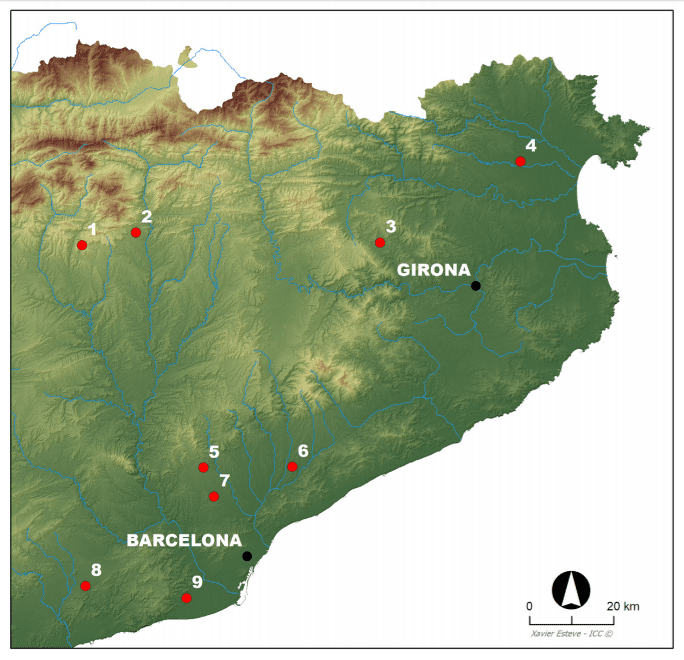Stone age communities in the Iberian Peninsula buried dogs alongside humans, a new study reports. These animals were also fed a diet very similar to that of their owners. All in all, the findings showcase how tight the relationship between humans and dogs had grown by this time.

Around the time that the Pit Grave culture arrived in the Iberian Peninsula — ‘imported’ by peoples migrating from Southern Europe some 4200 years ago — local tribes began ritualistically sacrificing and inhuming dogs. The sheer amount of cases recorded in the area suggests this practice was quite common, say researchers from the Universitat Autònoma de Barcelona (UAB) and the University of Barcelona (UB). But, the dogs shared more than a resting place with their owners — they also had a diet very similar to that of their human owners.
Overall, the findings shine a light on human-dog interactions in the Neolithic communities of the Iberian Peninsula (today’s Spain), and the role these animals played in the day’s funerary practices.
Till death do us part — and then some more
The study analyzed the remains of twenty-six dogs found in funerary structures from four sites in the Barcelona region. Isotopic analyses were performed for eighteen of these canines to help determine how much control humans had over the dog’s lives — including aspects such as diet control.
The dogs were between one month and six years old (estimated based on their teeth) at the time of burial. Most were between twelve and eighteen months old. They were buried mainly in circular graves, together or near humans. A few specimens were found in separate graves, and one near the entrance of the mortuary chamber. The ages had to be estimated this way as most specimens were only partially complete. Full remains were recovered for a single animal which was buried near a child. None of the remains showed bone fractures nor marks left by evisceration, butchering, or predators.
Given their young age and lack of any signs of handling after death, the team believes these sacrifices and burials were ceremonial or religious in nature.

Image credits Silvia Albizuri et al., (2019), JoSR.
“Choosing young animals aged up to one year old suggests there was an intention in the sacrifice. Although we can think it was for human consumption, the fact that these were buried near humans suggests there was an intention and a direct relation with death and the funerary ritual,” says first author Silvia Albizuri from the Prehistoric Studies and Research Seminar (SERP) of the UB.
“This hypothesis is consistent, in addition, with the fact that they are found in an area of cultural influence that gives a symbolic value to the dog during that period, such as Southern France or Northern Italy.”
The study also offers clues as to how these dogs lived. Isotopic analyses of both their and human remains revealed that most of these papers ate a diet similar to humans and their herbivorous animals. Cereal such as wheat and vegetables made up a large portion of a diet, which the team notes was likely “very similar to the [pig’s]”. The remains of two puppies showed very low nitrogen levels, which indicates a “mainly a vegetarian diet and which is clearly different from the rest of the dogs”, the authors explain. A few other adult specimens also showed signs of a mainly vegetarian diet. Only a handful of the dogs likely had menus rich in animal protein, they add.
“These data show a close coexistence between dogs and humans, and probably, a specific preparation of their nutrition, which is clear in the cases of a diet based on vegetables,” says co-author Eulàlia Subirà from the Research Group on Biological Anthropology (GREAB) of UAB.
“They would probably do so to obtain a better control of their tasks on security and to save the time they would have to spend looking for food. This management would explain the homogeneity of the size of the animals.”
The study stands out because not much is known about how dogs were involved in prehistoric burial customs. The number of dog remains and their proximity to humans in burial sites through the Iberian Peninsula is quite exceptional from this point of view, the team explains. Later individual burials are known in the region, but the team’s findings suggest this was a general practice among Neolithic tribes in the Iberian Peninsula up until the Iron age.
It also helps us better understand how dogs came to be man’s best friend.
“Recently, we saw dogs have ten genes with a key function for starch and fat digestion, which would make the carbohydrates assimilation more efficient than its ancestor’s, the wolf. Our study helps reaching the conclusion that during the Neolithic, several vegetables were introduced to their nutrition,” notes Eulàlia Subirà.
Furthermore, the findings also suggest that dogs played an important role in the lives of Neolithic populations in the area, perhaps for their role in protecting herds and settlements. This role may be the vital relation that turned them into a companion in death or symbols in funerary rituals, the researchers conclude.
The paper “Dogs in funerary contexts during the Middle Neolithic in the northeastern Iberian Peninsula (5th–early 4th millennium BCE)” has been published in the Journal of Archaeological Science: Reports.


